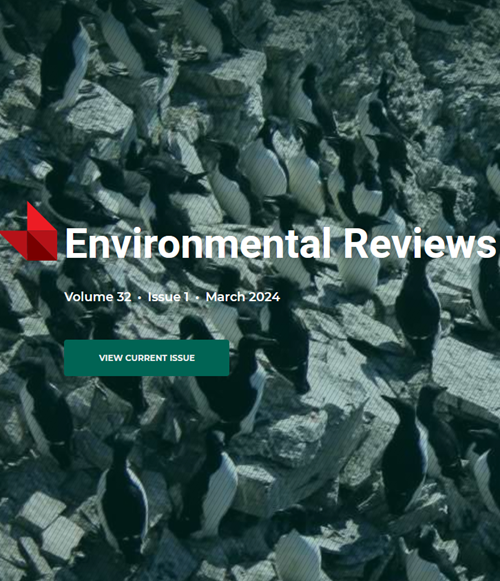Microplastics in lakes and rivers: an issue of emerging significance to limnology
IF 5.1
3区 环境科学与生态学
Q2 ENVIRONMENTAL SCIENCES
引用次数: 23
Abstract
Microplastics—plastic particles in the size range of planktonic organisms—have been found in the water columns and sediments of lakes and rivers globally. The number and mass of plastic particles drifting through a river can exceed those of living organisms such as zooplankton and fish larvae. In freshwater sediments, concentrations of microplastics reach the same magnitude as in the world’s most contaminated marine sediments. Such particles are derived from a unique biogeochemical cycle that ultimately influences productivity, biodiversity, and ecosystem functioning. Furthermore, microplastics act as vectors of toxic substances to invertebrates, fishes, herpetofauna, and waterfowl. We contend that the concentration of this distinct particle component is an ecologically significant parameter of inland waterbodies because of its ubiquity, environmental persistence, and interactions with key ecological processes. No environmental field survey that has searched for microplastics has yet failed to detect their presence. Standardized limnological protocols are needed to compare spatio-temporal variation in the concentration of microplastics within and across watersheds. Data obtained from such protocols would facilitate environmental monitoring and inform policy for managing plastic waste; furthermore, they would enable more accurate modeling of contaminant cycling and the development of a global plastic budget that identifies sources, distribution and circulation pathways, reservoir size and retention times.湖泊和河流中的微塑料:一个对湖泊学日益重要的问题
微塑料——浮游生物大小范围内的塑料颗粒——已经在全球湖泊和河流的水柱和沉积物中被发现。在河流中漂流的塑料微粒的数量和质量可能超过浮游动物和鱼苗等生物的数量和质量。在淡水沉积物中,微塑料的浓度与世界上污染最严重的海洋沉积物中的浓度相同。这些颗粒来源于一个独特的生物地球化学循环,最终影响生产力、生物多样性和生态系统功能。此外,微塑料是有毒物质对无脊椎动物、鱼类、爬行动物和水禽的载体。我们认为,由于这种独特的颗粒成分的浓度无处不在、环境持久性和与关键生态过程的相互作用,它是内陆水体的一个重要生态参数。没有一项环境实地调查没有检测到微塑料的存在。需要标准化的湖泊学协议来比较流域内和流域间微塑料浓度的时空变化。从这些议定书获得的数据将有助于环境监测和为管理塑料废物的政策提供信息;此外,它们还可以更准确地模拟污染物循环,并制定全球塑料预算,以确定污染源、分布和循环途径、储层大小和保留时间。
本文章由计算机程序翻译,如有差异,请以英文原文为准。
求助全文
约1分钟内获得全文
求助全文
来源期刊

Environmental Reviews
环境科学-环境科学
自引率
3.50%
发文量
45
期刊介绍:
Published since 1993, Environmental Reviews is a quarterly journal that presents authoritative literature reviews on a wide range of environmental science and associated environmental studies topics, with emphasis on the effects on and response of both natural and manmade ecosystems to anthropogenic stress. The authorship and scope are international, with critical literature reviews submitted and invited on such topics as sustainability, water supply management, climate change, harvesting impacts, acid rain, pesticide use, lake acidification, air and marine pollution, oil and gas development, biological control, food chain biomagnification, rehabilitation of polluted aquatic systems, erosion, forestry, bio-indicators of environmental stress, conservation of biodiversity, and many other environmental issues.
 求助内容:
求助内容: 应助结果提醒方式:
应助结果提醒方式:


